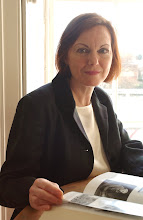
 Jenny Stoner sent this information about her ancestors: There seems to be quite a few Woodmans in the Bloomsbury area at this time. It's not a very common name so I presume they're all from the same stock but as yet I haven't discovered where they originally came from.
Jenny Stoner sent this information about her ancestors: There seems to be quite a few Woodmans in the Bloomsbury area at this time. It's not a very common name so I presume they're all from the same stock but as yet I haven't discovered where they originally came from.William Woodman was born in 1808 in St Pancras. He was a solicitor's clerk originally but by the 1861 census he was an engineer. He and his wife Maria lived in Duke's Street (now Duke's Road), just south of the Euston Road. They had seven children, of whom one was William Lacey Woodman.
William Lacey Woodman was born in Newington in 1842 and married Anna Ogden (1865) in St Pancras Church. He, too, was an engineer.
Anna's parents, John and Anna Ogden, although not born in London, lived at 1 Little Russell Street, Bloomsbury by the mid-19th century. John Ogden was a coach builder. Their daugher, Anna (1846-1904), who was a milliner by the age of fourteen, was one of five children. The others were: John, a surveyor, who had eight children and lived in St Pancras; William, a coach painter who had three children and had moved away by 1891; Emily, who married a solicitor's clerk at St Pancras, and Rosina, who remained unmarried and looked after her retired father. From her birth until 1901, Rosina lived at 1 Little Russell Street. After her father's death, she was a self-employed sempstress and lived with two lodgers.
William and Anna Woodman had four children, all born in Bloomsbury - William became a barman, Anna married and moved to Liverpool, Rosina was a clerk to a photographer, and Francis (my grandfather), known as Frank, became an accountant. Frank was a choirboy at St George's Church, Bloomsbury (pictures above), and then went on to amateur dramatics. I can remember that he and his sister, Rosina (Rose), could converse in 'back-slang', which reverses the first and last letter of words - eg. boy becomes yob! It was something that they had learned in childhood.





